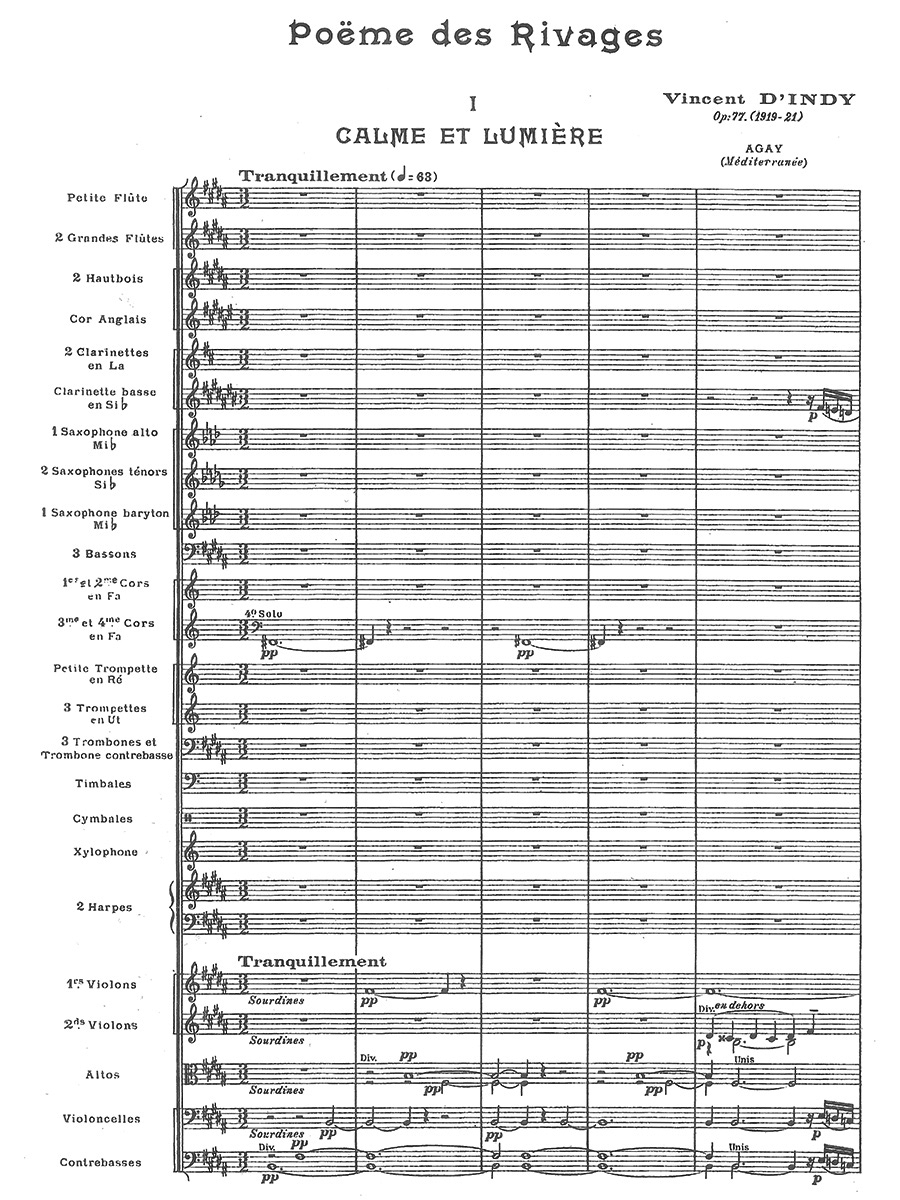Poème de Rivages, Orchestral Suite
Indy, Vincent d’
36,00 €
Preface
Vincent d’Indy
Poème des rivages Op. 77
Orchestral Suite
(b. Paris, 27 March 1851 – d. Paris, 2 December 1931)
Preface
This orchestral suite, Poème des rivages
This little known work reveals a composer sensitive to musical imagery, produced through a texturally adventurous orchestral score, which integrates many of d’Indy’s compositional characteristics. Notably, the main thematic material is developed across all four movements. The piece uses contrasts of tempo, time signature and rhythmic motives to depict the many perspectives of the sea, but it is by no means another La Mer (Claude Debussy, 1905). Rather this seascape is a combination of scenic images and with a seeming reflection of the atmosphere of the Mediterranean coast where d’Indy and his new bride moved too. Much timbral and textural contrasts are created using contrasts in register, a large orchestra, including some new instruments, instrumental doubling and divisions and imitation between parts (some of which is novel for d’Indy at this time, notably the inclusion of four saxophones). The orchestra is large: d’Indy calls for triple woodwind, with the addition of an alto, two tenor and baritone saxophone, along with three trumpets and trombones, with the addition of a piccolo trumpet and contrabass trombone (noting that this could be replaced by a tuba). The strings are joined by two harps, celeste, piano, xylophone, cymbals and timpani.
Read full preface / Komplettes Vorwort lesen > HERE
Score Data
| Score No. | 1780 |
|---|---|
| Edition | Repertoire Explorer |
| Genre | Orchestra |
| Size | 225 x 320 mm |
| Printing | Reprint |
